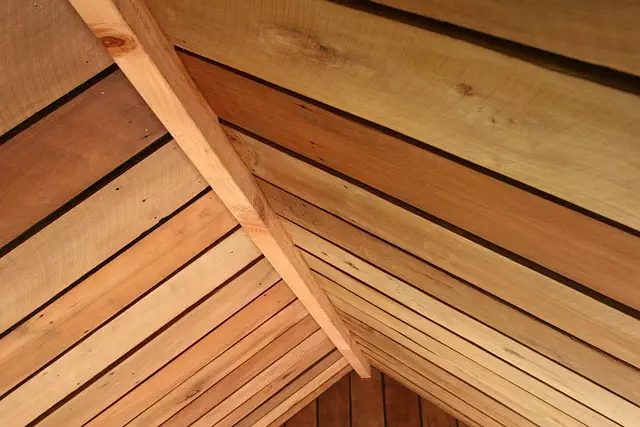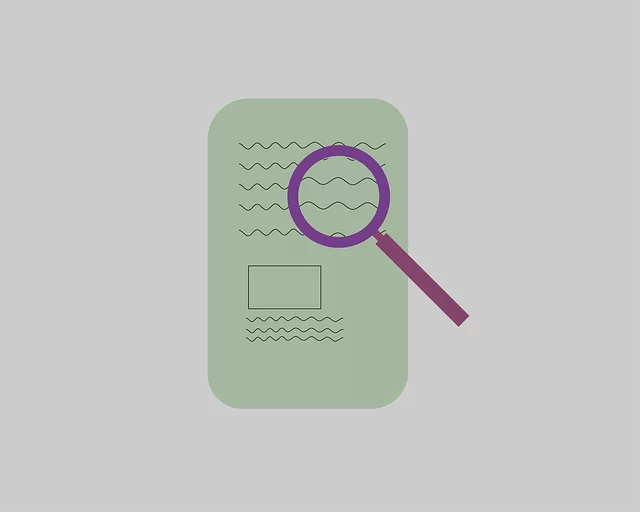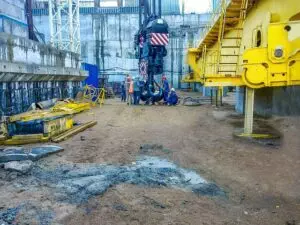Foundation issues like cracks, settling, and bowing walls pose significant risks if left unaddressed, potentially leading to structural damage. Timely identification through non-invasive foundation inspections using technologies like GPR and thermal imaging is crucial. These methods prevent property disruption, minimize costs, and enhance precision in diagnosing and repairing problems like cracks or settlement. A thorough inspection involves visually assessing both interior and exterior for signs of damage. Professionals then prioritize repairs based on severity and impact on structural integrity. Non-invasive repair techniques, such as polymeric foam and carbon fiber wraps, offer effective stabilization with less disruption compared to traditional methods. Proven case studies highlight the success of non-invasive foundation repair in stabilizing and repairing structures, reducing downtime and property damage. As technology advances, these methods are expected to grow in popularity for efficient, cost-effective, and environmentally friendly structural maintenance.
“Discover the future of warranty foundation repair with non-invasive techniques. This comprehensive guide explores cutting-edge methods transforming the industry, addressing common foundation issues and their impact on homes. Learn how advanced technology, from sophisticated sensors to innovative materials, enables precise, efficient, and cost-effective repairs without disturbing your property. From understanding foundation problems to successful case studies, this article is your go-to resource for non-invasive foundation inspection and repair.”
Understanding Foundation Issues: Common Problems and Their Impact

Foundation issues are a common concern for many homeowners, often leading to significant structural problems if left unaddressed. A foundation inspection is crucial to identifying potential risks and determining the extent of repair requirements. Some prevalent foundation problems include settling, heave, cracks, and bowing walls. Settling occurs when the soil beneath the house compacts, causing the structure to dip or sink slightly, resulting in uneven floors and doors that stick. Heave, on the other hand, is the opposite effect, where soil expands due to moisture, pushing the foundation upward and potentially creating gaps between the floorboards and walls.
Cracks in foundations can vary from hairline fissures to larger breaks, indicating stress within the structure. Bowing walls suggest a severe issue, as they lean outward, decreasing room sizes and affecting the overall stability of the building. These problems not only impact the physical integrity of the home but also have financial implications. Timely identification through thorough foundation inspections is key to preventing costly repairs or even structural collapse in extreme cases.
The Benefits of Non-Invasive Foundation Inspection Techniques

Non-invasive foundation inspection techniques offer numerous advantages for both homeowners and professional contractors. By employing advanced technology such as ground-penetrating radar (GPR) or thermal imaging, experts can thoroughly assess a structure’s foundation without causing any damage or disruption to the property. This non-destructive approach allows for early detection of potential issues like cracks, heaves, or settlement, enabling prompt repairs and preventing more severe—and costly—problems down the line.
Moreover, these modern inspection methods provide accurate data and detailed images, facilitating precise diagnosis and targeted solutions. Homeowners benefit from reduced stress, minimal inconvenience, and cost savings associated with less invasive procedures compared to traditional excavation or extensive demolition. Non-invasive foundation inspections are not only environmentally friendly but also ensure a safer work environment for contractors, making them an increasingly preferred choice in the industry.
Advanced Technology in Foundation Repair: Tools and Equipment

In today’s digital era, advanced technology has revolutionized foundation repair, making processes once considered invasive now non-invasive. One of the key aspects driving this transformation is the integration of sophisticated tools and equipment designed to accurately diagnose and address issues with minimal disruption to the surface or surrounding structures. These technologies enable a thorough foundation inspection, detecting subtle cracks, settlement, or other problems that might go unnoticed through traditional methods.
For example, ground-penetrating radar (GPR) is increasingly used for non-invasive foundation assessments. GPR sends electromagnetic waves into the soil, creating detailed images of underground structures and anomalies. This data helps experts identify potential issues with foundations without breaking the surface, ensuring a more cost-effective and less disruptive repair solution. Similarly, advanced cameras and sensors provide real-time visual feedback during repairs, enhancing precision and safety.
Step-by-Step Guide to Conducting a Comprehensive Foundation Inspection

To begin your non-invasive foundation repair process, a thorough foundation inspection is paramount. Start by visually examining the exterior of the structure for any visible signs of damage or settlement, including cracks in the foundation walls, uneven floors, or distorted doors and windows. Next, focus on a detailed interior assessment. Walk through every room, observing floor and wall irregularities, and check for visible gaps around doors and windows. Don’t overlook the basement or crawl space—look for moisture issues, structural discrepancies, and signs of insect infestation. Take notes meticulously throughout your inspection, documenting all observations and potential problem areas.
Once you’ve compiled your findings, compare them against industry standards and best practices for foundation integrity. This step-by-step approach ensures a comprehensive evaluation, enabling you to accurately identify the scope of any necessary repairs and select the most effective non-invasive solution for your specific situation.
Interpreting Inspection Findings: Identifying Repair Priorities

After a thorough foundation inspection, professionals can now interpret the findings to determine the most pressing repair priorities. This step is crucial as it involves identifying structural issues that need immediate attention to prevent further damage or instability. During the inspection, experts will assess various elements like cracks in concrete, bowing walls, uneven floors, and signs of water intrusion. Each issue is meticulously documented, allowing for a comprehensive analysis.
By interpreting these findings, contractors can prioritize repairs based on severity, location, and potential impact on the building’s structural integrity. This organized approach ensures that the most critical issues are addressed first, leading to more effective and efficient warranty foundation repair processes.
Non-Invasive Repair Methods: Materials, Cost, and Durability

Non-invasive repair methods for foundation issues have gained popularity due to their effectiveness and minimal disruption. These techniques employ advanced materials designed to fortify and stabilize the existing foundation without extensive excavation or demolition. One such material is polymeric foam, which can fill cracks and gaps, providing structural support. Another common choice is carbon fiber wraps that reinforce weak spots, preventing further damage.
The cost of non-invasive repairs varies depending on the extent of the damage and the chosen materials. While it may be more expensive upfront compared to traditional methods, the reduced disruption and faster restoration make it an attractive option. Moreover, these modern materials offer superior durability, ensuring long-lasting repair that can withstand various environmental conditions. A thorough foundation inspection is crucial to determine the most suitable non-invasive solution for any given property.
Case Studies: Successful Implementation of Non-Invasive Warranty Foundation Repairs

Non-invasive warranty foundation repair has proven its worth through numerous successful case studies, showcasing its effectiveness and benefits. These implementations have highlighted how advanced technology and innovative methods can address structural issues without causing additional damage or disruption to properties. By utilizing remote sensing, drone inspections, and precision engineering, companies are now capable of performing comprehensive foundation inspections remotely. This approach not only saves time and costs but also minimizes the risk associated with traditional invasive methods.
Case studies have demonstrated that non-invasive repairs can effectively stabilize and repair various foundation problems, including cracks, settlement, and shifting. Through these successful projects, homeowners and contractors alike have witnessed reduced downtime, minimized property damage, and long-lasting results. As technology continues to advance, the adoption of non-invasive warranty foundation repair is expected to grow, offering a more efficient, cost-effective, and environmentally friendly solution for structural maintenance and repairs.
